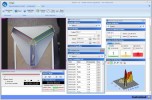Authors
Li P, Rial D, Canas PM, Yoo JH, Li W, Zhou X et al.
Lab
Department of Neurology and Pharmacology, Boston University School of Medicine, Boston, MA, USA
Journal
Mol Psychiatry.
Abstract
Human and animal studies have converged to suggest that caffeine consumption prevents memory deficits in aging and Alzheimer's disease through the antagonism of adenosine A2A receptors (A2ARs). To test if A2AR activation in the hippocampus is actually sufficient to impair memory function and to begin elucidating the intracellular pathways operated by A2AR, we have developed a chimeric rhodopsin-A2AR protein (optoA2AR), which retains the extracellular and transmembrane domains of rhodopsin (conferring light responsiveness and eliminating adenosine-binding pockets) fused to the intracellular loop of A2AR to confer specific A2AR signaling. The specificity of the optoA2AR signaling was confirmed by light-induced selective enhancement of cAMP and phospho-mitogen-activated protein kinase (p-MAPK) (but not cGMP) levels in human embryonic kidney 293 (HEK293) cells, which was abolished by a point mutation at the C terminal of A2AR. Supporting its physiological relevance, optoA2AR activation and the A2AR agonist CGS21680 produced similar activation of cAMP and p-MAPK signaling in HEK293 cells, of p-MAPK in the nucleus accumbens and of c-Fos/phosphorylated-CREB (p-CREB) in the hippocampus, and similarly enhanced long-term potentiation in the hippocampus. Remarkably, optoA2AR activation triggered a preferential p-CREB signaling in the hippocampus and impaired spatial memory performance, while optoA2AR activation in the nucleus accumbens triggered MAPK signaling and modulated locomotor activity. This shows that the recruitment of intracellular A2AR signaling in the hippocampus is sufficient to trigger memory dysfunction. Furthermore, the demonstration that the biased A2AR signaling and functions depend on intracellular A2AR loops prompts the possibility of targeting the intracellular A2AR-interacting partners to selectively control different neuropsychiatric behaviors.Molecular Psychiatry advance online publication, 17 February 2015; doi:10.1038/mp.2014.182.
BIOSEB Instruments Used:
Smart 3.0 - Video Tracking System (SMART30)

 Pain - Thermal Allodynia / Hyperalgesia
Pain - Thermal Allodynia / Hyperalgesia Pain - Spontaneous Pain - Postural Deficit
Pain - Spontaneous Pain - Postural Deficit Pain - Mechanical Allodynia / Hyperalgesia
Pain - Mechanical Allodynia / Hyperalgesia Learning/Memory - Attention - Addiction
Learning/Memory - Attention - Addiction Physiology & Respiratory Research
Physiology & Respiratory Research
 Pain
Pain Central Nervous System (CNS)
Central Nervous System (CNS) Neurodegeneration
Neurodegeneration Sensory system
Sensory system Motor control
Motor control Mood Disorders
Mood Disorders Other disorders
Other disorders Muscular system
Muscular system Joints
Joints Metabolism
Metabolism Cross-disciplinary subjects
Cross-disciplinary subjects CONFERENCES & MEETINGS
CONFERENCES & MEETINGS 